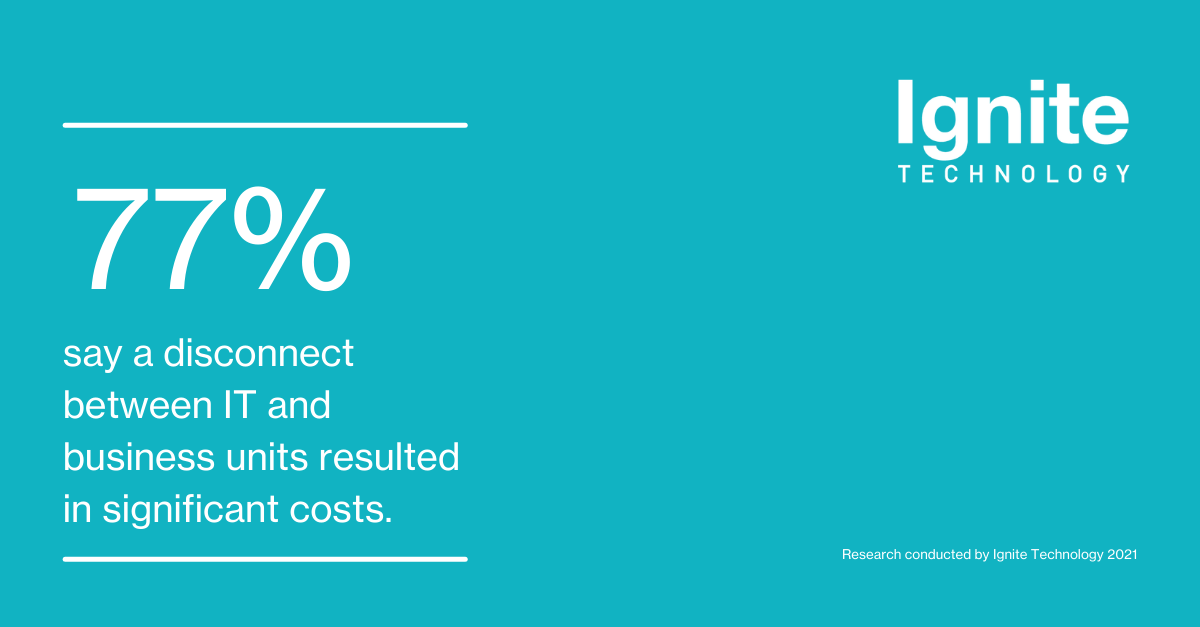Did you know 84% of digital transformation efforts fail? Here are four common barriers to digital success – and how to mitigate them.
Increased competitive edge, reduced operational costs, more efficient processes, and more connected customer experiences. It’s easy to see why many businesses consider digital transformation among their highest priorities.
But let’s not forget the risks are just as great as the rewards. In fact, 84% of companies will see their digital transformation efforts fail. And even when they do succeed, the results often differ greatly from initial expectations.
So, why is this happening?
In our experience, the barriers to success often have little to do with the ‘digital’ side of digital transformation. But rather, the lack of alignment between transformation efforts and overall business strategy. And with this lack of alignment often comes limited insights available to those leading digital efforts.
Four common challenges and how to mitigate them
Whether you’ve already embarked on your digital transformation journey, or are starting to roadmap new digital initiatives, project visibility and strategic alignment will be vital to your success.
If you’re unable to measure the progress and benefits of your digital projects or see how they connect to overall business strategy, you’ll likely find yourself coming face to face with the following four challenges.
- Difficulty prioritising projects
If you find yourself struggling to prioritise projects – you’re not alone. In our recent study, 41% of respondents say they’re constrained by their ability to make the right investments.
Without accurate project and portfolio metrics to track, you can’t make informed and proactive comparisons. And without comparative insight, it’s unlikely you’ll know which projects are going to deliver the greatest value to your business.This means you’ll only ever prioritise projects based on instinct – and not quantifiable data from across your project portfolio. Which, for 54% of C-level respondents in our recent survey of PPM and IT leaders, is a personal and professional goal they hope to overcome.
2. Trouble allocating resources
Much like our first challenge, uncertainty around resource allocation stems from limited visibility of the potential value and return your projects will deliver.
In our study, 58% of business owners said they feel constrained by their ability to allocate the right resources to the right projects. A challenge that becomes more pronounced among respondents managing a greater number of projects annually.
Research by Ignite Technology 2021
By enabling centralised, real-time visibility of your highest value projects, you could more easily identify and assign the right resources to your most prosperous projects.
3. Limited alignment between projects and strategy
When teams work in a siloed environment, it can be difficult to pool data and align methodologies across the organisation.
While many digital modernisation programmes aim to unite Sales, Service, and Marketing to deliver a more connected customer experience, all too often IT and business strategy remain misaligned.
Not only do IT and business strategy work on two very different sides of the business, but IT often uses methodologies and language unfamiliar to business leaders. While it may seem quaint to cite the use of cryptic language by IT as a barrier, the reality is that misalignment can negate the benefits associated with DevOps and Agile.
What’s more, 77% of respondents say a disconnect between IT and business units had resulted in significant costs for their organisation.
Research from Ignite Technology 2021

4. Limited development scalability
If you’re managing a smaller-scale transformation, you can likely assess the progress of each initiative manually, and still have time to make an informed decision. But as you scale up to transform larger parts of the business, a single, centralised view of your portfolio is essential if you want to effectively manage resources.
Delivering new initiatives successfully, at scale, is simply untenable without the ability to track your entire portfolio. And that means equipping your global workforce with a single source of truth to pool their insights, knowledge, and progress.
When aligned, everyone can better inform what direction your initiatives take – including who they’ll benefit, and how.
What can a project portfolio management (PPM) solution do for you?
So, what’s the solution? In our eBook, ‘Digital Transformation: four key challenges and how to mitigate them’, we explore how the right PPM solution partner can help you mitigate the above challenges – and much more.
By enabling a deeper, more flexible view of your portfolio, you can better align strategic initiatives, allocate resources faster and more effectively, and ensure products most likely to yield the highest return are always prioritised.
In our eBook, you’ll also learn why viewing your portfolio by products rather than just projects can help, where digital product management fits in, and why it’s essential you find a PPM that can integrate with Agile tools. Plus, we’ll unpack what organisations most frequently look for in a PPM solution, and how your peers are currently managing their portfolios.
Dig deeper into our research and learn how to choose the right PPM partner in our eBook here.


